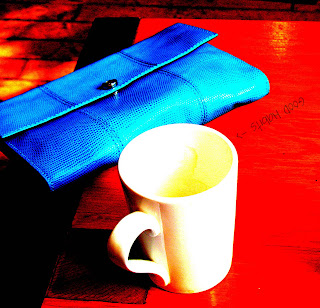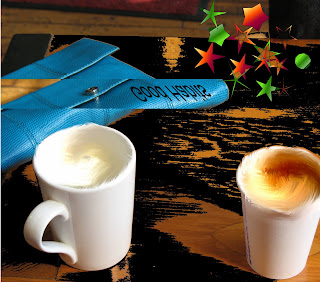I spent my observation living at my parents house, who do not have a router, and believe that opening Firefox will give their computer a virus. Needless to say, my blogging has been slipping. I promise to post about my observation soon! For now, I want to talk about the technology pathway from the school district I visited:
Summerland Secondary school offers courses in Applied Digital Communications for grades 9 and 10. The course is basically on computer literacy. It is a hands-on introductory course designed as a practical, activity-based course using the most widely used software on the market. Some of the topics covered in the classes are: animation, word processing, graphics, spreadsheets, desktop publishing, web page design, magazine cover, database, PowerPoint, and Internet Explorer. In a nutshell, students learn the basics of what computers can do. Evaluation is based on progress made with the computer, quizzes and other related assignments and tests per application.
This model could be very beneficial to students, assuming they really are computer illiterate when they come into the course. The material is very applied, not as theoretical as some of the other Information Technology classes, and the students learn things that they will likely need to know in the future. The subjects could be very helpful for the students’ future careers, and can likely be applied to many different jobs (ex. personal websites, databases, word processing).
However, the problem I perceive from this course is that I would assume most students are able to (at the very least) use a word processing program at a functional level. I would worry that a lot of students would be at a level that is probably higher than the course material, and that it may be taken as an “easy A” course, without a lot of learning occuring. It also seems a bit outdated - why are we teaching students how to use Internet Explorer? In short, this course sounds really boring.
The changes I would make to this course would be to update a bit more to use more modern uses of technology, and give the students a bit more credit as to what their abilities should be at this point. I like the practicality of this course, but maybe it would make sense to ask the students what they would like to learn and try to cover less topics?
I wasn’t able to sit in on this specific class, so I can’t comment on the attitudes towards it; however, in other computer-based classes (planning 10, for example), there seemed to be a really negative attitude towards using computers. The course had recently been changed to be completely Moodle-based, and it appeared that a bit of a revolt was occuring, and a move back to the more traditional ways of teaching planning. In addition to this, every class I sat in on that used computers was full of students not doing the work they were supposed to be doing. Overall, there was no focus, and it seemed like little interest in learning about how computers can be useful.
"This famous linguist once said that of all the phrases in the English language, of all the endless combinations of words in all of history, that Cellar Door is the most beautiful."
Wednesday, October 27, 2010
Friday, October 1, 2010
Photo Editing
Original Image (from my own camera):

__________________________
Editing Using Picnik:
1) Cropped the image
2) Increased saturation to 29
3) Decreased exposure to -14
4) Increased contrast to 68
5) Increased sharpness to 40
6) Text Tool

_________________________
Editing Using Sumo Paint:
1) Smudging Tool (Oil Brush) on both coffee cups
2) Free Transform/Rotate Tool on the purse
3) Crop Image
4) Text Tool
5) Transform Text
6) Gradient Tool
7) Star Tool (creates the stars filled with chosen gradient)
8) Paint Bucket Tool
 _________________________
_________________________
After this project I would certainly use Picnik over Sumo Paint. I think if I had some training with Sumo Paint it would have been a great tool (it reminded me a lot of Photoshop), but being that I have no training, I felt like what I was doing was all guesswork. Picnik, on the other hand, was very simple to use. I missed last class where this assignment was explained, so I'm not sure if there was a chance to try out the programs, but I had no trouble navigating my way around Picnik, all the options were clearly labelled and fairly self-explanatory, and I'm happier with the final product.

__________________________
Editing Using Picnik:
1) Cropped the image
2) Increased saturation to 29
3) Decreased exposure to -14
4) Increased contrast to 68
5) Increased sharpness to 40
6) Text Tool

_________________________
Editing Using Sumo Paint:
1) Smudging Tool (Oil Brush) on both coffee cups
2) Free Transform/Rotate Tool on the purse
3) Crop Image
4) Text Tool
5) Transform Text
6) Gradient Tool
7) Star Tool (creates the stars filled with chosen gradient)
8) Paint Bucket Tool
 _________________________
_________________________After this project I would certainly use Picnik over Sumo Paint. I think if I had some training with Sumo Paint it would have been a great tool (it reminded me a lot of Photoshop), but being that I have no training, I felt like what I was doing was all guesswork. Picnik, on the other hand, was very simple to use. I missed last class where this assignment was explained, so I'm not sure if there was a chance to try out the programs, but I had no trouble navigating my way around Picnik, all the options were clearly labelled and fairly self-explanatory, and I'm happier with the final product.
Subscribe to:
Comments (Atom)